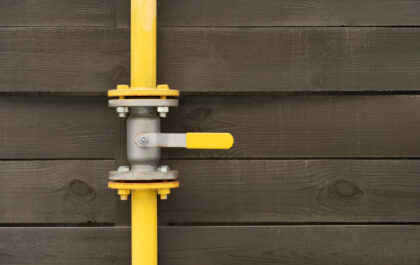Bathroom remodels often promise excitement and satisfaction—a fresh look, better functionality, or maybe just removing clutter. But before upgrading to a shower or installing a new soaking tub, there’s always that inevitable task: figuring out how to remove your old bathtub safely and correctly.
Of course, bathtub removal isn’t an everyday chore. Though simple at a glance, the process involves plumbing basics, heavy lifting, and often a careful touch around finishes you’d like to preserve. At Ready Remodel, we’ve guided countless homeowners through bathtub removal, so we’re here to share what you should expect and how you can best approach it.
Preparing for Bathtub Removal: Initial Steps
Removing an old bathtub begins with thoughtful preparation. While most tubs aren’t directly hooked to water lines, shutting off the water is helpful to avoid unintended flooding surprises. If your bathroom doesn’t have independent shut-off valves, simply turn off the main water supply—double-check the taps afterward.
Additionally, clear your space entirely, making it more manageable to navigate during the project. Place cloth drops or protective sheets to minimize dirt accumulation and accidental damage to nearby fixtures or finishes.
Essential Steps to Remove an Old Bathtub
With your working area primed, follow these clear, manageable steps to seamlessly remove your bathtub:
Step 1: Disconnect Plumbing Fixtures and Accessories
Though tub designs may vary, plumbing fixture removal tends to be intuitive. Carefully unscrew visible screws and fittings around drain screens, handles, overflow plates, and faucet spouts by turning them counterclockwise with a screwdriver. For stubborn pipe connections beneath these covers, keep handy a specialized drain wrench.
Step 2: Removing Drain Assembly Connections
Different bathtubs hold varied secrets beneath. Some secure connections to complicated drain assemblies—often in tight spaces. With limited visibility, openings in adjacent ceilings or walls might become necessary. Unskilled tinkering could cause accidental damage, so consulting a plumbing professional adds security and peace of mind. A plumber knows precisely how to access hidden tub drain connectors swiftly and carefully.
Get bathroom quotes from up to 3 Pros!
Enter a zip below and get matched with top-rated pros in your area.
Step 3: Create a Tub Access Point by Cutting the Surround
Around your tub, undoubtedly there’s a surround material (tile or drywall). You’ll need safe and careful management here:
- For drywall surrounds, trace neat lines using a stable edge. Cut carefully along these guidelines with a compact drywall saw, revealing the studs behind clearly.
- For tile surrounds, slice grout patiently with specialized removers and pry tiles off neatly. If there are cement backers, gently score with utility knives, refraining from power tools to prevent harmful airborne dust.
Step 4: Separate the Bathtub from Wall Attachments
Once the surrounding access area clears nicely, detach the bathtub from its support points. Screwed or nailed fasteners connecting the tub to studs must be carefully unscrewed or pried loose using a power drill or a reliable pry tool. Caulk lines at the tub base are easily sliced free with a utility knife, creating a smooth pathway for removal later on.
Step 5: How to Take Out an Old Bathtub by Material Type
At this stage, every bathtub removal depends heavily on the tub’s construction material. Tub materials generally fall into several main categories:
- Removing Porcelain Tub or Enamel Steel: Typically heavy yet manageable in whole form. Sliding wood skids beneath helps immensely before sliding the tub out cautiously to avoid damaging pivotal bathroom elements nearby.
- Removing a Steel, Acrylic, Composite, or Fiberglass Tub: Consider the technique of cutting these lighter tubs into manageable sections using a reciprocal saw. Protective gear, such as masks and safety goggles, minimizes exposure to dust and tub fragments.
- Removing Cast Iron Tubs: Extremely heavy and unsafe for standard cutting tools; instead, safely fragment the tub into smaller transportable sections via careful strikes from a sledgehammer. Cloth-covered basins absorb fragments efficiently here.
Step 6: Dispose of Your Old Bathtub Properly
Your bathtub removal concludes responsibly and eco-consciously when you plan carefully for disposal. Local waste service providers and junk removal specialists readily assist homeowners, offering smart disposal suggestions depending on the bathtub’s specific type and material.
Why Removing Your Old Bathtub Makes Sense
As renovations gain momentum, understanding reasons behind bathtub removal helps clarify the project’s value. Our experience at Ready Remodel reveals common motivations homeowners often share:
- A Design Refresh: Aesthetically dated or damaged tubs prevent modern designs from truly shining—a new install refreshes visual appeal instantly.
- Increased Space-Efficiency: Swapping bathtubs for sleek showers often instantly enhances limited bathroom spaces, offering better usability.
- Eco-Friendly Functions: Modern showers frequently align with eco-friendly lifestyles, significantly minimizing water consumption daily.
- Accessibility and Practicality: Eliminating a high bath wall barrier grants easier access for aging or mobility-limited family members.
DIY Bathtub Removal vs. Hiring Professionals
Foregoing professional services might seem tempting, but consider the necessary plumbing skills and correct tools, along with protecting your bathroom area from unintended collateral damage. Hiring professionals for bathtub removals typically ranges from $150 to $4,500, significantly varying based on tub complexity, material types, disposal methods, and local labor charges.
Though expenses might threaten your budget, consider your limitations: What if, accidentally, you trigger a hidden pipe leak or unintentionally damage adjacent finishes? Experiencing a client’s unfortunate story about accidental flooding reminds us at Ready Remodel that DIY savings often pale next to professional peace of mind.
Busting Common Myths: Does Removing Your Bathtub Decrease Home Value?
You might wonder about resale value impacts, and that curiosity is justified. One homeowner recalled a conversation with a real estate agent who mentioned that young families prioritize having at least one bathtub in the home.
However, it’s crucial to consider your local housing trends. For instance, older couples or sophisticated buyers often strongly prefer step-free, access-focused shower designs, hence potentially boosting your home’s perceived worth in specific demographics.
Quick Reference Cost Table for Bathtub Removal
| Bathtub Material | Average Removal Cost |
|---|---|
| Porcelain or Enamel Steel | $300 – $600 |
| Steel, Acrylic, Composite, or Fiberglass | $150 – $400 |
| Cast Iron | $500 – $4,500 |
Prices vary by region, so consult local professionals for accurate estimates near you.
Ready to Remove Your Old Bathtub?
If the thought of ripping out your bathtub feels overwhelming and daunting, remember you’re not alone in your journey. Experts at Ready Remodel are always ready to help. By working closely together, removing your bathtub can easily launch excitement toward your dream bathroom renovation—a beautiful, functional space that genuinely serves your home and family.
If you have questions or want help discerning the dimensions and details of your bathroom remodel, reach out today. After all, your dream bathroom begins precisely here, following the mindful removal of your old bathtub.




